Comprehensive Guide to Understanding Headache Causes and Tailored Management Solutions
Headaches are a prevalent health concern that can severely disrupt your daily life, affecting your ability to concentrate, perform tasks efficiently, and enjoy free time. They can manifest in various forms, each with distinct triggers and symptoms. It is essential to cultivate a thorough understanding of the different types of headaches to facilitate effective treatment and management strategies. This knowledge equips individuals to tailor their approaches according to personal experiences and unique needs, ultimately leading to a more personalized and effective response to this common health issue.
Whether you suffer from occasional headaches or endure chronic pain, identifying the root causes is vital for pursuing effective therapies and making positive lifestyle adjustments. As you explore the complex landscape of headache management, consider various treatment modalities, which may include both traditional and alternative therapies. Options like balanced acupuncture, neurological acupuncture, and manual therapy can effectively relieve discomfort by addressing the underlying issues, empowering you to regain control over your health and well-being.
By investigating these diverse treatment pathways, you can embark on a holistic journey that aims not only to alleviate headaches but also to enhance your overall health and wellness.
Key Strategies for Effective Headache Management
- Tension headaches are the most common type, often described as a constant band-like pressure surrounding the head, which tends to worsen during stressful situations.
- Migraine headaches are characterized by intense, throbbing pain, usually accompanied by symptoms such as nausea, vomiting, and heightened sensitivity to light and sound, significantly interfering with daily activities.
- Cluster headaches are infamous for their severe pain, occurring in cyclical patterns and typically centered around one eye, making them one of the most agonizing forms of headache.
- Sinus headaches are caused by sinusitis, leading to pressure and discomfort in the forehead, cheeks, and nasal regions, often exacerbated by allergies or infections.
- Hormonal headaches, commonly experienced by women, are linked to hormonal changes and can occur during menstruation, pregnancy, or menopause, requiring tailored management approaches.
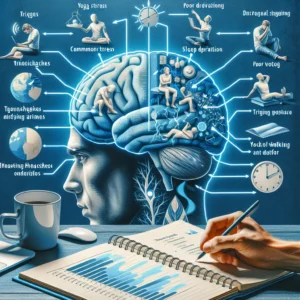 In-Depth Analysis of Tension Headaches and Their Triggers
In-Depth Analysis of Tension Headaches and Their Triggers
Identifying Common Patterns and Triggers Associated with Tension Headaches
Reflecting on your experiences may help you uncover specific patterns that trigger tension headaches. Factors such as extended periods of working at a desk, emotional stress, and inadequate ergonomic setups can significantly contribute to their onset. Recognizing these triggers is vital for preventing future headaches and protecting your well-being. Common culprits include workplace stress, insufficient sleep, and even dehydration, all of which can heighten your discomfort. Maintaining a detailed headache diary can be instrumental in tracking the timing and potential causes of these headaches, enabling you to take proactive measures to lessen their impact on your daily life.
Adopting a Holistic Strategy for Lasting Relief from Tension Headaches
A well-rounded, multi-faceted approach is often the most effective way to alleviate tension headaches. Integrating therapies such as balanced acupuncture aims to restore energy flow throughout your body by targeting specific acupoints that may contribute to muscle tightness and stress. Additionally, including relaxation techniques such as deep breathing exercises or yoga can significantly reduce tension while promoting overall wellness. By addressing both physical and emotional stressors through a holistic lens, you can notably decrease the frequency and intensity of tension headaches, enhancing your quality of life.
Augmenting Relief with Neurological Acupuncture and Manual Therapy Techniques
Neurological acupuncture can bolster your relief efforts by emphasizing the nervous system’s involvement in pain perception. This specialized technique targets pathways related to headache development, with the potential to modify your brain’s responses to pain signals. When combined with manual therapy techniques, such as massage or myofascial release, you may experience substantial relief from the tension that often exacerbates your headaches. Together, these therapies create a synergistic effect, alleviating pain while fostering lasting relaxation and improved well-being.
 Comprehensive Overview of Migraines: Causes, Symptoms, and Management
Comprehensive Overview of Migraines: Causes, Symptoms, and Management
Migraines are more than mere severe headaches; they encompass complex neurological events that can incapacitate you for hours or even days. Characterized by intense, throbbing pain typically localized to one side of the head, migraines may also involve symptoms such as nausea, vomiting, and increased sensitivity to light and sound. Various triggers, including specific foods, hormonal fluctuations, and environmental factors, can initiate these debilitating episodes, emphasizing the necessity of identifying and managing these triggers for effective treatment.
Successfully managing migraines generally involves a multi-layered approach. While medications may provide quick relief during an attack, integrating complementary therapies like acupuncture can significantly reduce the frequency and intensity of future migraine episodes. Neurological acupuncture specifically addresses the pain pathways associated with migraines, potentially altering your brain’s reaction to pain stimuli and interrupting the cycle of recurrent attacks.
When combined with manual therapy techniques that alleviate muscular tension and enhance blood circulation, you may uncover a more comprehensive strategy for effectively managing migraine headaches, allowing you to reclaim your daily life from the disruptions caused by these distressing episodes.
Cluster Headaches: Understanding Patterns, Triggers, and Pain Severity
| Metrics | Data |
|---|---|
| Prevalence | 1 in 1,000 adults |
| Age of onset | 20-40 years old |
| Duration of attacks | 15 minutes to 3 hours |
| Pain intensity | Severe, often described as the worst pain experienced |
| Frequency of attacks | 1 to 8 times a day |
Cluster headaches are among the most severe types of headaches, often described as a burning or piercing pain that occurs in cyclical patterns or clusters. You may experience these attacks several times each day over weeks or months, followed by periods of complete relief. The pain generally localizes around one eye or one side of the head and may be associated with additional symptoms such as nasal congestion or tearing, amplifying the distress of the experience.
Given their intensity, cluster headaches necessitate prompt and effective management strategies. While traditional medications may provide some level of relief, exploring alternative therapies like acupuncture can significantly reduce the frequency and intensity of these painful episodes. By targeting specific points associated with the trigeminal nerve—the primary nerve involved in headache pain—neurological acupuncture may effectively help regulate your body’s pain response, potentially alleviating some of the burden associated with cluster headaches.
When paired with manual therapy techniques designed to promote relaxation and decrease stress levels, you may find a more balanced and practical approach to managing these intense headache episodes, ultimately improving your overall quality of life.
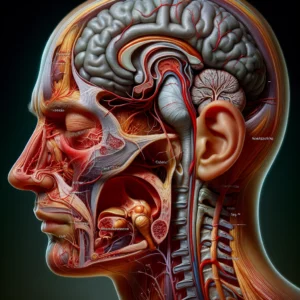 Navigating the Complexities of Sinus Headaches
Navigating the Complexities of Sinus Headaches
Sinus headaches often occur when inflammation or infection in the sinus cavities leads to uncomfortable pressure and pain in the forehead, cheeks, and around the eyes. You might also experience these headaches alongside symptoms like nasal congestion, facial tenderness, and even fever. Understanding the root causes of sinus headaches is critical for effective treatment, as they frequently arise from allergies or respiratory infections that can worsen your symptoms, perpetuating a cycle of discomfort.
A combined approach utilizing various therapies can be especially effective in addressing sinus headaches. Acupuncture has proven effective in reducing inflammation and promoting drainage within the sinus cavities, alleviating the pressure and discomfort associated with these headaches. Implementing balanced acupuncture techniques specifically targets acupoints related to sinus health, while neurological acupuncture can address any associated pain pathways contributing to your suffering.
Moreover, incorporating manual therapy can effectively relieve tension in the neck and shoulders, which may exacerbate sinus pressure. This comprehensive and multifaceted strategy can provide substantial relief from the discomfort related to sinus headaches, allowing you to breathe easily and enjoy a more comfortable daily experience.
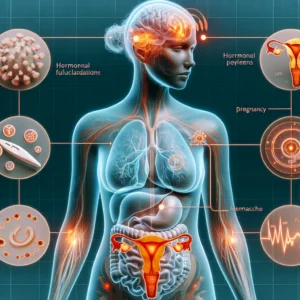 Exploring Hormone-Related Headaches and Effective Management Strategies
Exploring Hormone-Related Headaches and Effective Management Strategies
Investigating the Intricate Connection Between Hormones and Headache Patterns
Understanding the complex relationship between hormones and headache occurrences can empower you to take proactive measures in managing these specific types of headaches. Hormonal fluctuations, particularly in women, can trigger painful headaches, often coinciding with menstrual cycles, pregnancy, or menopause. By recognizing these patterns, you can better anticipate and prepare for potential headache episodes, allowing for more effective management strategies.
Employing Natural Remedies for Hormone-Related Headache Relief
To alleviate hormone-related headaches, consider integrating therapies that focus on harmonizing your body’s energy and hormonal levels. Acupuncture has demonstrated effectiveness in regulating hormonal fluctuations by stimulating specific acupoints that influence endocrine functions. Furthermore, neurological acupuncture can enhance this approach by addressing the nervous system’s role in pain perception during hormonal changes, offering a more comprehensive treatment experience that targets the underlying causes of your headaches.
Implementing a Holistic Strategy for Managing Hormone-Related Headaches
When combined with manual therapy techniques designed to promote relaxation and alleviate stress, you may uncover a more effective method for managing hormone-related headaches. This holistic approach can assist you in navigating the complexities of hormonal shifts, equipping you with the tools necessary to reduce pain and improve your overall quality of life, allowing you to thrive even amidst these fluctuations.
 Strategies for Effectively Overcoming Rebound Headaches
Strategies for Effectively Overcoming Rebound Headaches
Rebound headaches typically arise from the overuse of pain relief medications, creating a cycle of dependency and increased headache frequency. You may find yourself frequently resorting to over-the-counter pain relievers, only to experience worsening headaches as the medication loses its effectiveness. Recognizing this cyclical pattern is crucial for breaking free from rebound headaches and reclaiming your health.
To effectively manage rebound headaches, it is vital to reduce your reliance on medications while gradually exploring alternative therapies. Acupuncture offers a natural method to alleviate pain without resorting to pharmaceuticals. Utilizing balanced acupuncture techniques can help restore energy flow and promote relaxation, while neurological acupuncture addresses the underlying pain pathways affected by medication overuse.
By incorporating manual therapy techniques that focus on relieving tension and reducing stress, you may develop a holistic approach to breaking the cycle of rebound headaches. This strategy ultimately empowers you to regain control over your health and well-being, enhancing your overall quality of life.
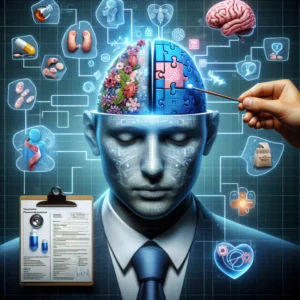 Comprehensive Techniques for Understanding and Managing Mixed Headaches
Comprehensive Techniques for Understanding and Managing Mixed Headaches
Mixed headaches present a unique challenge as they incorporate elements from multiple headache types, complicating both diagnosis and treatment. You might find yourself experiencing symptoms that resemble tension headaches one day and migraines the next, making it crucial to personalize your management approach based on your specific symptoms. Understanding the intricacies associated with mixed headaches is essential for developing a treatment plan tailored to your individual needs.
Consider adopting a comprehensive strategy that includes various therapies to effectively manage mixed headaches. Acupuncture can be particularly advantageous in addressing the diverse symptoms associated with mixed headaches by targeting multiple acupoints relevant to different headache types. Additionally, neurological acupuncture may assist in modulating pain perception across various pathways, while balanced acupuncture promotes overall wellness and alleviates discomfort.
Furthermore, manual therapy techniques can effectively relieve muscle tension and stress that may contribute to headache development. By integrating these diverse approaches, you can create a personalized strategy for managing mixed headaches, significantly enhancing your overall quality of life.
Common Questions Regarding Headaches and Their Management
What types of headaches are commonly identified?
There are several distinct types of headaches, including tension, migraines, cluster, sinus, and hormone-related headaches. Each type displays unique characteristics and treatment options, necessitating customized approaches for effective management.
Can you provide more details regarding tension headaches?
The Article Types of Headaches Explained: A Comprehensive Guide appeared first on https://mcrtherapies.com
The Article Headache Types Explained: Your Comprehensive Guide Was Found On https://limitsofstrategy.com

 Exploring Holistic Approaches: Effective Alternative Therapies for Chronic Sciatica Relief
Exploring Holistic Approaches: Effective Alternative Therapies for Chronic Sciatica Relief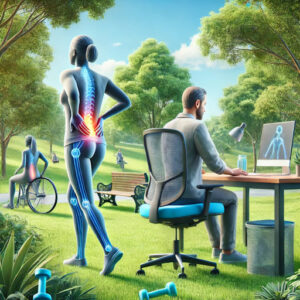 Tailoring Lifestyle Changes for Maximum Chronic Sciatica Management
Tailoring Lifestyle Changes for Maximum Chronic Sciatica Management The Crucial Importance of Professional Consultation in Chronic Sciatica Management
The Crucial Importance of Professional Consultation in Chronic Sciatica Management
 Discover Holistic Approaches: Alternative Therapies for Chronic Sciatica Relief
Discover Holistic Approaches: Alternative Therapies for Chronic Sciatica Relief Adopting Strategic Lifestyle Changes for Effective Chronic Sciatica Management
Adopting Strategic Lifestyle Changes for Effective Chronic Sciatica Management The Critical Importance of Professional Consultation in Chronic Sciatica Management
The Critical Importance of Professional Consultation in Chronic Sciatica Management
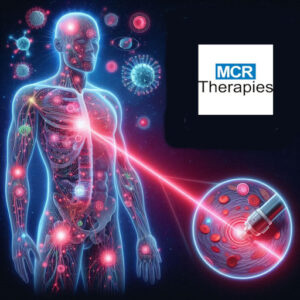 Understanding the Mechanisms Behind High-Intensity Laser Therapy
Understanding the Mechanisms Behind High-Intensity Laser Therapy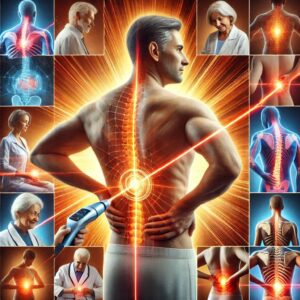 Inspiring Success Stories from High-Intensity Laser Therapy Patients
Inspiring Success Stories from High-Intensity Laser Therapy Patients
 Employ Heat and Cold Therapy for Effective Pain Management
Employ Heat and Cold Therapy for Effective Pain Management Select Supportive Pillows and Mattresses for Optimal Sleep and Pain Relief
Select Supportive Pillows and Mattresses for Optimal Sleep and Pain Relief
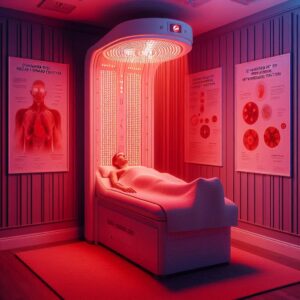
 Explore the Multifaceted Benefits of Red Light Therapy for Back Pain Relief
Explore the Multifaceted Benefits of Red Light Therapy for Back Pain Relief Implementing Comprehensive Strategies for Effective Back Pain Management
Implementing Comprehensive Strategies for Effective Back Pain Management
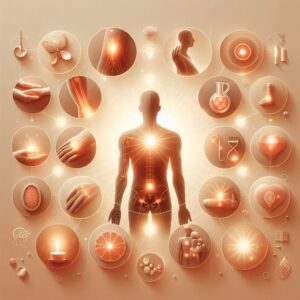 Choose the Best Infrared Therapy Devices to Meet Your Health Goals
Choose the Best Infrared Therapy Devices to Meet Your Health Goals Effective Strategies for Integrating Infrared Therapy into Your Daily Wellness Routine
Effective Strategies for Integrating Infrared Therapy into Your Daily Wellness Routine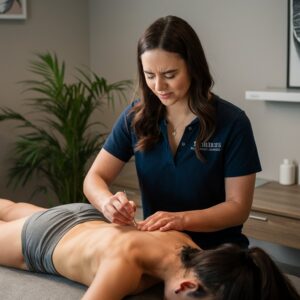
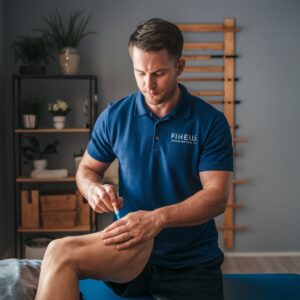 Enhancing Pain Relief: The Power of Combining Dry Needling with Joint Mobilization Techniques
Enhancing Pain Relief: The Power of Combining Dry Needling with Joint Mobilization Techniques Empowering Patients Through Comprehensive Education: Understanding the Benefits and Risks of Dry Needling
Empowering Patients Through Comprehensive Education: Understanding the Benefits and Risks of Dry Needling